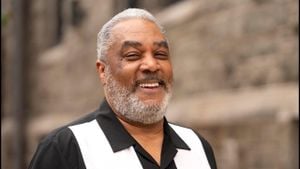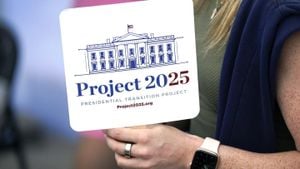Health and educational disparities among older adults present significant challenges within the United States, affecting quality of life and accessibility to necessary resources. These disparities often arise from various socio-economic factors, including income, education level, and geographic location, all of which contribute to differing health outcomes and access to education.
Older adults, defined as individuals aged 65 and above, face various health issues such as chronic conditions, mental health disorders, and declining physical abilities. A staggering percentage of older adults experience multiple chronic illnesses, with the most common being heart disease, diabetes, and arthritis. This demographic is also more susceptible to mental health challenges, with depression and anxiety being prevalent issues. Unfortunately, not all older adults receive adequate mental health care, and those from lower socio-economic backgrounds often encounter barriers to access.
According to the Centers for Disease Control and Prevention (CDC), older adults living below the poverty line are 22% more likely to report their health as fair or poor, compared to their more affluent counterparts. Another study found stark differences by education level; individuals with lower educational attainment report poorer health outcomes and have limited access to healthcare services.
Geographical disparities play a rather significant role as well. Older adults living in rural areas often lack access to healthcare facilities and resources. A report from the National Rural Health Association shows over 60 million people reside in rural areas, yet they tend to have higher rates of poverty and lower access to health services compared to urban populations. This lack of access becomes even more pronounced when considering the limited number of geriatric specialists practicing outside urban centers.
Transportation presents another challenge. Many elderly individuals rely on public transport or caregivers to reach healthcare facilities, but the fragility of their health can often pose barriers. For those with limited mobility, the inability to access reliable transportation adds to the growing issue of healthcare accessibility.
Education also remains key to addressing health disparities. Programs aimed at improving literacy rates and offering adult education can help older adults understand their health conditions, manage their medications, and actively engage with healthcare providers. Studies have shown educated individuals are more likely to engage in preventive care and are less likely to develop chronic health conditions.
Effective health interventions need to be culturally sensitive and take inequalities seriously. Community-based programs which integrate health education with social support networks can be particularly beneficial. These programs focus on drawing resources from local communities to bridge the gap between older adults and the healthcare systems.
One approach being adopted by several organizations includes incorporating technology. Mobile health apps aimed at older adults can facilitate communication with healthcare providers and provide reminders for medication and appointments. Telehealth services, which became popular during the COVID-19 pandemic, represent another innovative solution. They reduce the need for transportation and allow health care systems to reach individuals who might otherwise be unable to access service.
Nevertheless, many older adults still encounter barriers related to technology. A significant number of them may lack digital literacy skills or access to high-speed internet, highlighting the importance of targeted training and resources to aid this demographic.
The role of policy cannot be understated when it relates to improving disparities. Legislation aimed at enhancing access to affordable healthcare options, addressing transportation needs, and increasing funding for senior wellness programs can create impactful change. This becomes even more pressing as the aging population continues to grow, with projections indicating the number of older adults will reach over 80 million by 2040.
It’s also important for health care providers to recognize and tackle biases they might hold, which can unintentionally affect the care older adults receive. Training on cultural competence can help dismantle barriers between healthcare professionals and the elderly, leading to improved health outcomes.
Recent studies have also highlighted the need for social support systems as part of the health care framework for older adults. Being socially isolated can contribute to negative health outcomes, but creating programs to connect older adults with peers or involve them in community activities can combat this isolation.
Research continues to emerge, emphasizing the urgency of addressing health and educational disparities among older adults. Solutions will require the collaboration of healthcare providers, policymakers, educators, and community organizations aiming for comprehensive care models and innovative resources.
With growing awareness of the disparities affecting older adults in the U.S., it is clear there are many multifaceted solutions to heighten health literacy, access to services, and education opportunities. The challenge remains substantial but not insurmountable, and with concerted efforts, the health and educational divide can begin to close, ensuring older adults can age with dignity and support.



